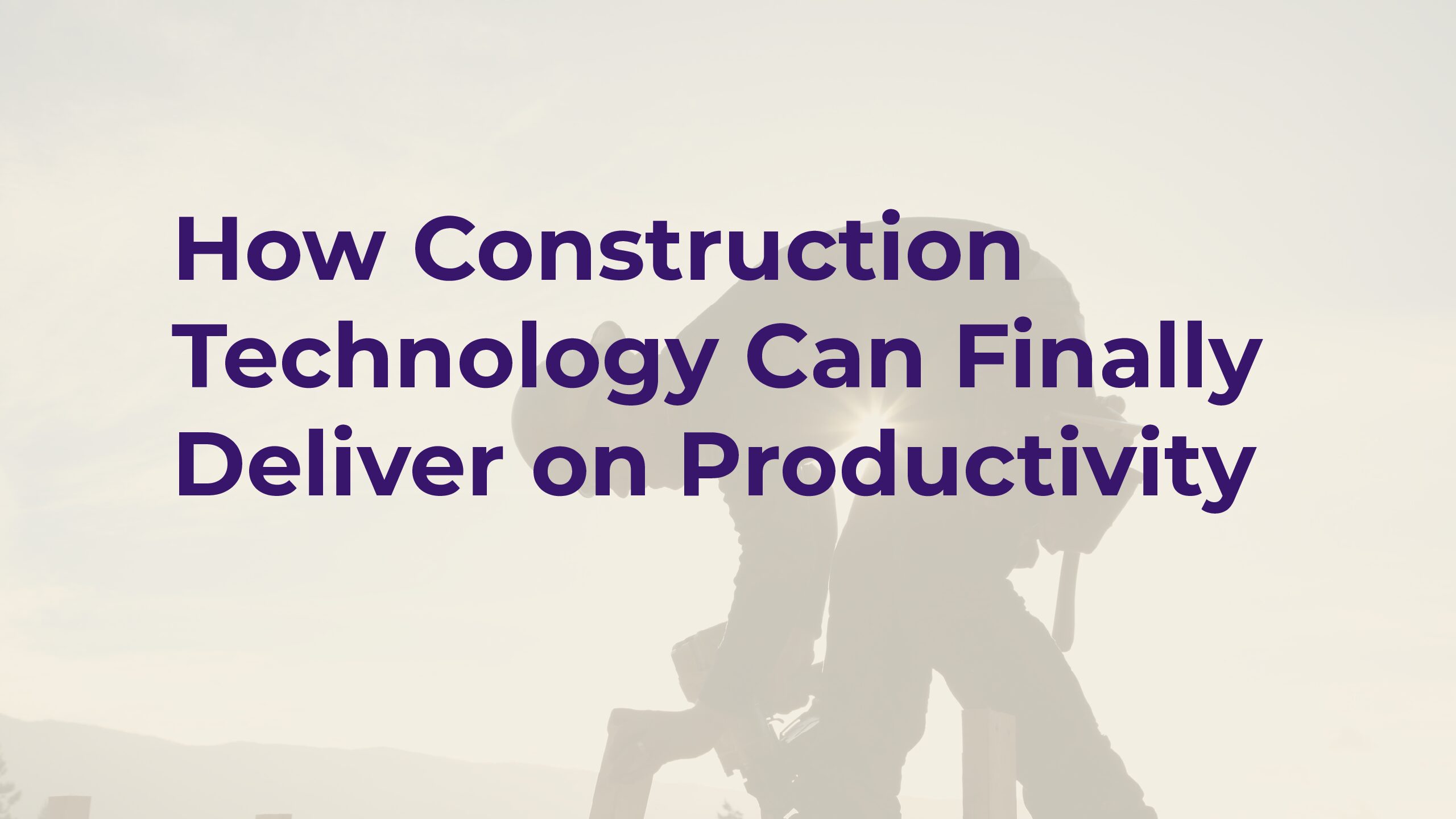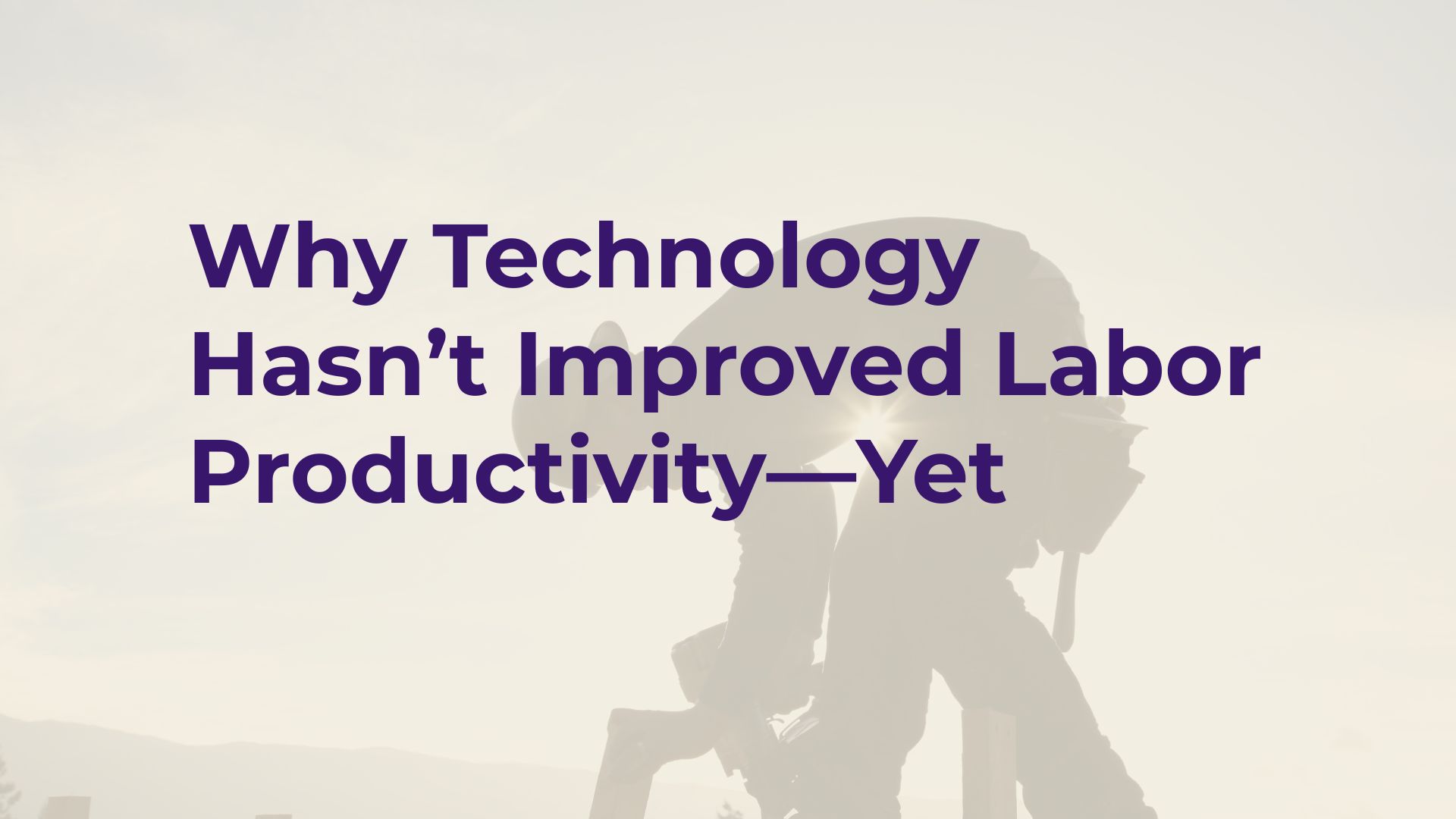Field Productivity, Without Getting in the Way: A Smarter Role for Construction Software

Introduction
If construction software is going to make a real impact on productivity, it has to do more than just get used—it has to actually help. That means it can’t be something crews tolerate out of obligation. It has to be something they want to use—because it makes their work easier, not harder. Too often, even well-intentioned software ends up getting in the way, demanding attention at the worst possible times, and turning productive hours into screen time.
Part of the challenge is cultural, not just technical. Crews love using new hardware. A fresh tool that feels solid in your hand and makes the job go faster? That’s satisfying. But software doesn’t work the same way. It doesn’t carry the same appeal. There’s no excitement in opening an app—only obligation. Whether it’s old or new, most software is seen as something that gets in the way, not something that helps move the work forward.
That’s why the real issue isn’t ease of use. It’s the need to use it at all. Any tool that requires the crew to “use” it—in the sense of direct interaction—no matter how intuitive or streamlined, introduces drag. It takes time. It takes focus. It interrupts the rhythm of the work. And in an environment where every minute counts, that’s often enough to push it aside. Worse, it can become counterproductive—distracting crews at the exact moment they should be doing the work the software is meant to support.
If construction technology’s goal is to improve labor productivity, it won’t succeed by simply being easier for crews to use. It will succeed by minimizing the need for interaction—delivering value quietly, automatically, and without asking for much from the crew.
Let the Software Do the Work
Most construction software in use today serves as a record-keeping or record-retrieving system. It helps crews document what happened—timecards, daily reports, photos—or access what’s already been recorded, like drawings, specs, or safety information. These tools have their place. But if the goal is to improve productivity, we have to ask more from the software than simply storing and serving data. We have to expect it to think and act on its own.
Modern systems can do more than wait for user input. With the intelligence available today, software should be able to observe what’s happening and make decisions without needing someone to tell it what to do. If the system already knows who’s assigned to which jobsite, it shouldn’t wait for someone to open a map—it should monitor conditions, anticipate delays, and send alerts to both the crew and the supervisor. No forms to fill. No buttons to press. Just action when it’s needed.
This isn’t about simplifying workflows or reducing steps. It’s about removing them altogether. The less a crew has to interact with the system, the more value that system can deliver. And when the software starts pulling its own weight—anticipating problems, triggering communication, and surfacing insights without being prompted—it stops being just a system, and starts becoming a real contributor to the work.
Leverage the Data You Already Have
For software to act intelligently in the background—as we argued in the previous section—it still needs something to act on. And that means data. But here’s the catch: if we rely on the crew to provide that data manually, we’re right back where we started—introducing friction, slowing down the work, and risking low adoption. In fact, it can be counterproductive—adding tasks that interrupt the work instead of supporting it, and ultimately defeating the purpose of the software altogether. Every field entry becomes another point of resistance.
The good news is: we already have most of the data we need. Timecards, assignments, productivity logs, weather feeds, equipment usage—all of this is already being recorded across different systems. And even better news is, most of these systems now run in the cloud and can exchange data through APIs, making it entirely possible to connect these sources and build a real-time understanding of what’s happening on the job.
That’s why it’s often better to rely on inferred information—even if it’s not perfect—than to depend on collected information that may be delayed, incomplete, or never submitted. A smart system can recognize patterns, draw reasonable conclusions, and act on them automatically. That may not always be flawless, but it’s far more useful than waiting on data that never arrives.
In a way, it’s almost a good thing that so many construction tools have focused on collecting data for the past decade. We’ve spent years capturing everything—now it’s finally time to use it. And if we use it well, we can stop asking crews to feed the system, and start letting the system feed them.
Focus More on Consumption Than Production
Even though the goal is to minimize crew interaction with software, we know it can’t be eliminated entirely. There will always be some level of coordination, instruction, or feedback required. But when interaction is necessary, it should lean heavily toward consuming information—not producing it.
The difference is more than just ease—it’s direction and impact. Producing information is almost always reactive. Filling out a form, entering time, writing notes—these are reflections of what already happened. They may be useful for documentation or reporting, but they rarely improve productivity in the moment—and as noted earlier, they can even be counterproductive.
Consuming information, on the other hand, is proactive. A crew member who sees an updated assignment, a traffic delay, or a safety alert can act on it immediately. These moments help shape the work that comes next. They don’t just record the past—they improve the future.
That’s why software for crew productivity should be designed primarily to push information into the field, not pull information out of it. When the system provides relevant updates, reminders, and decisions—without requiring anything in return—it becomes a partner to the crew, not another task on their list.
Of course, the information being delivered has to be relevant and actionable. Overwhelming crews with generic updates or data they can’t use in the moment is counterproductive. But we also shouldn’t underestimate the intelligence of the people doing the work. Given clear, timely information, most crew members will know exactly what to do with it—and will take action based on their own experience and judgment.
Reducing interaction doesn’t mean eliminating communication. It means shifting it toward high-value, low-friction moments—where the system does the talking, and the crew can stay focused on building.
Conclusion
If we want construction technology to improve productivity, we have to stop building it around interaction. The more we ask crews to engage with software—enter data, respond to prompts, log events—the more we risk turning technology into a distraction instead of a support system.
The smarter path is to let the software do more on its own. Use intelligence to anticipate needs and take action quietly in the background. Leverage the data you already have—because asking crews to enter it again only adds friction. And when interaction is necessary, design it to flow into the field, not out of it. Push useful, timely information to the crew, and trust their experience to act on it.
In the end, productivity won’t come from software that’s easier to use. It will come from software that doesn’t need to be used much at all. The best tools won’t be the ones crews log into—they’ll be the ones that crews benefit from without even noticing.



